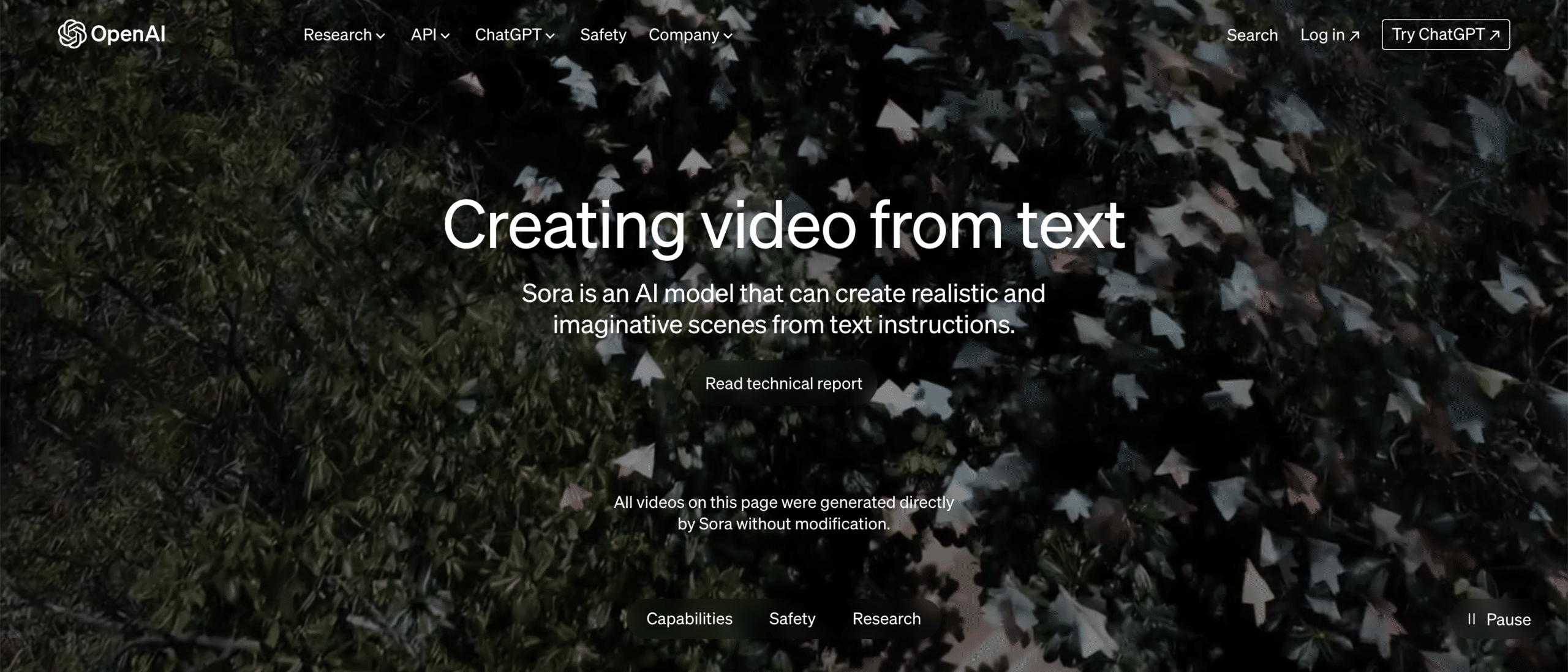Exploring Sora: OpenAI’s New Innovation

In the rapidly evolving world of technology, OpenAI, a leading entity in artificial intelligence research, has introduced a new innovation named Sora. This blog post aims to delve into the depths of Sora, shedding light on its capabilities, applications, and the potential impact it could have on the future of AI.
Sora: A Leap Forward in AI
Sora represents a significant advancement in the field of artificial intelligence. It’s a testament to OpenAI’s commitment to pushing the boundaries of what’s possible in AI research and development. Sora is designed to understand and learn from complex datasets, making it a powerful tool for a wide range of applications.
Capabilities of Sora
Sora boasts a range of impressive capabilities. From understanding complex datasets to generating human-like text, Sora is a powerful tool in the AI toolkit. It’s capable of learning and improving from experience, making it a dynamic and adaptable solution for various AI challenges.
The Future of AI with Sora
With Sora, the future of AI looks promising. As we continue to explore its potential, we can expect to see new applications and advancements that will shape the future of artificial intelligence. From healthcare to finance, the possibilities are endless.
What are some real-world applications of Sora?
Sora, OpenAI’s new innovation, has a wide range of potential real-world applications. Here are some of them:
- Filmmaking and Storytelling: Sora can visualize concepts rapidly, explore new angles, and craft entire narratives powered by AI.
- Game Development: Sora can streamline asset creation, design interactive environments, and bring characters to life seamlessly.
- Simulations and Training: Sora can generate realistic training scenarios for AI agents to gain an understanding of the physical world.
- Detailed Simulation of Physical Interactions: Sora’s potential extends into areas requiring detailed simulation of physical interactions.
- Content Creation: Sora offers a glimpse into the future of AI-assisted content creation.
- Complex Virtual Worlds and Games: Sora shows the ability to simulate some basic world interactions and can convincingly generate complex virtual worlds and games, like Minecraft.
How does Sora compare to other AI tools?
Sora, developed by OpenAI, is a generative AI tool that creates cinematic video-based content based on user prompts. It’s unique in its hyper-focus on photorealism.
Here’s how it compares to other AI tools:
- DALL-E and MidJourney: Unlike these AI image generators, Sora creates a video clip complete with motion, different camera angles, direction, and everything else you’d expect from a traditionally produced video.
- Emu by Meta, Gen-2 by Runway, Stable Video Diffusion by Stability AI, and Lumiere by Google: These are some of the earlier models of text-to-video AI. However, Sora appears to be more powerful than these predecessors in at least some respects.
- RunwayAI: While both Sora and RunwayAI are generative AI tools, Sora’s focus on photorealism sets it apart.
As we stand on the brink of a new era in artificial intelligence, Sora is paving the way for exciting developments. By understanding and harnessing the power of Sora, we can look forward to a future where AI is more integrated, efficient, and beneficial to all aspects of our lives.

